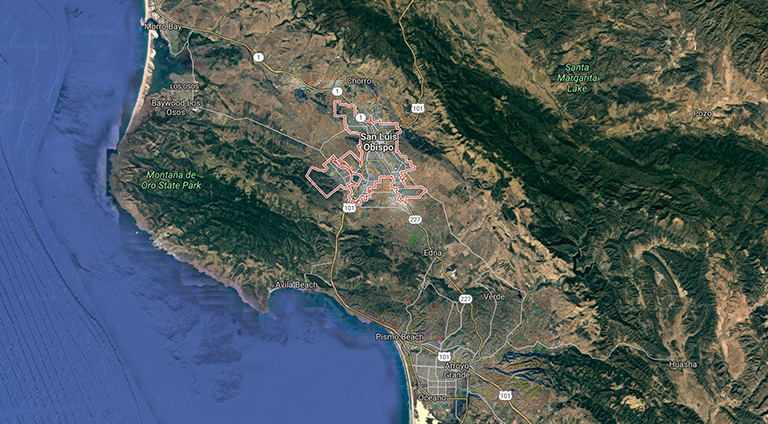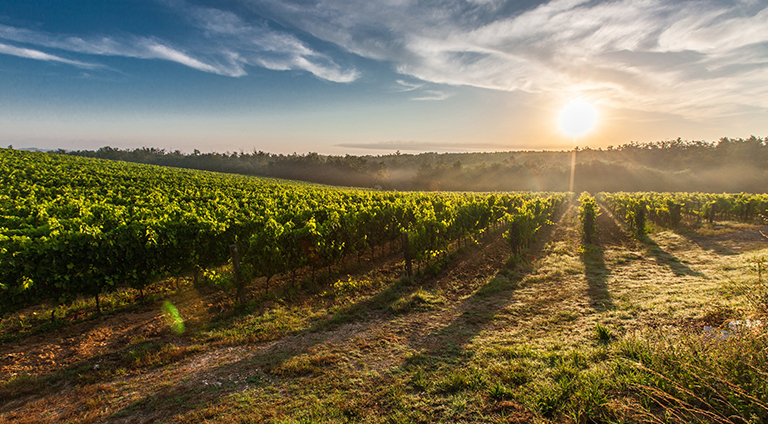
San Luis Obispo County is a popular place to live and visit due to its moderate climate, proximity to beautiful Pacific Ocean beaches, and plethora of recreational activities. With an estimated 282,000 people living in the whole county (around 45,000 people in SLO alone), agricultural and winemaking industries are a few of the main economic drivers. So it’s easy to see why anyone passionate about wine would want be here.
Although there are now dozens of interesting and unique wine businesses and varietals produced from SLO, winemaking has been around this region for hundreds of years. Its viticulture dates back all the way to the year 1772 when Father Junipero Serra built the Mission San Luis Obispo de Tolosa, which is now the main town of San luis Obispo.
Hailing from Spain, Serra and his fellow explorers made a conscious effort to bring the Catholic faith to native Californians and built a structure of adobe walls, timber beams, and tile roofs. The full compound hosted the church, living quarters, storerooms, a tannery, grist mill, water supply system and plenty of land for cattle and farming.
Vineyards were crucial for supporting its mass and everything seemed to be running smoothly in the Central Coast until the Mexican War of Independence of 1810. By then, California missions had become pretty self-sufficient and didn’t need any help from the Spanish motherland. When Mexicans won the war and broke free from Spain in 1821, they drove out the Spanish Franciscans and broke up most of the land holdings into ranchos.
It was during this period where there was a lot of lawlessness and California suffered a tremendous drought in which a lot of its crops and vineyards diminished (except for the 1880 Zinfandel vines planted by Henry Ditmas in Rancho Saucelito- those were restored by the Greenough family in the 1970s and remain as a foundation of Saucelito Canyon Vineyard).

Fast forward a century later and winemaking really took off in the early 1970’s when the Goss family planted some Chardonnay at Chamisal Vineyard, located in the heart of Edna Valley. Around the same time, the Niven family also planted Chardonnay, Pinot Noir, and some other varietals. Seeing how these early varietals flourished, more wine businesses continued to sprout up. In 1979, SLO’s first winery was established, now called the Center of Effort.
Now home to a rich diversity of varietals and small, family-owned boutique wineries up to the biggest wine producers, San Luis Obispo holds close to 100,000 acres of vines which proves this industry’s worth as an important contributor to the local economy.
